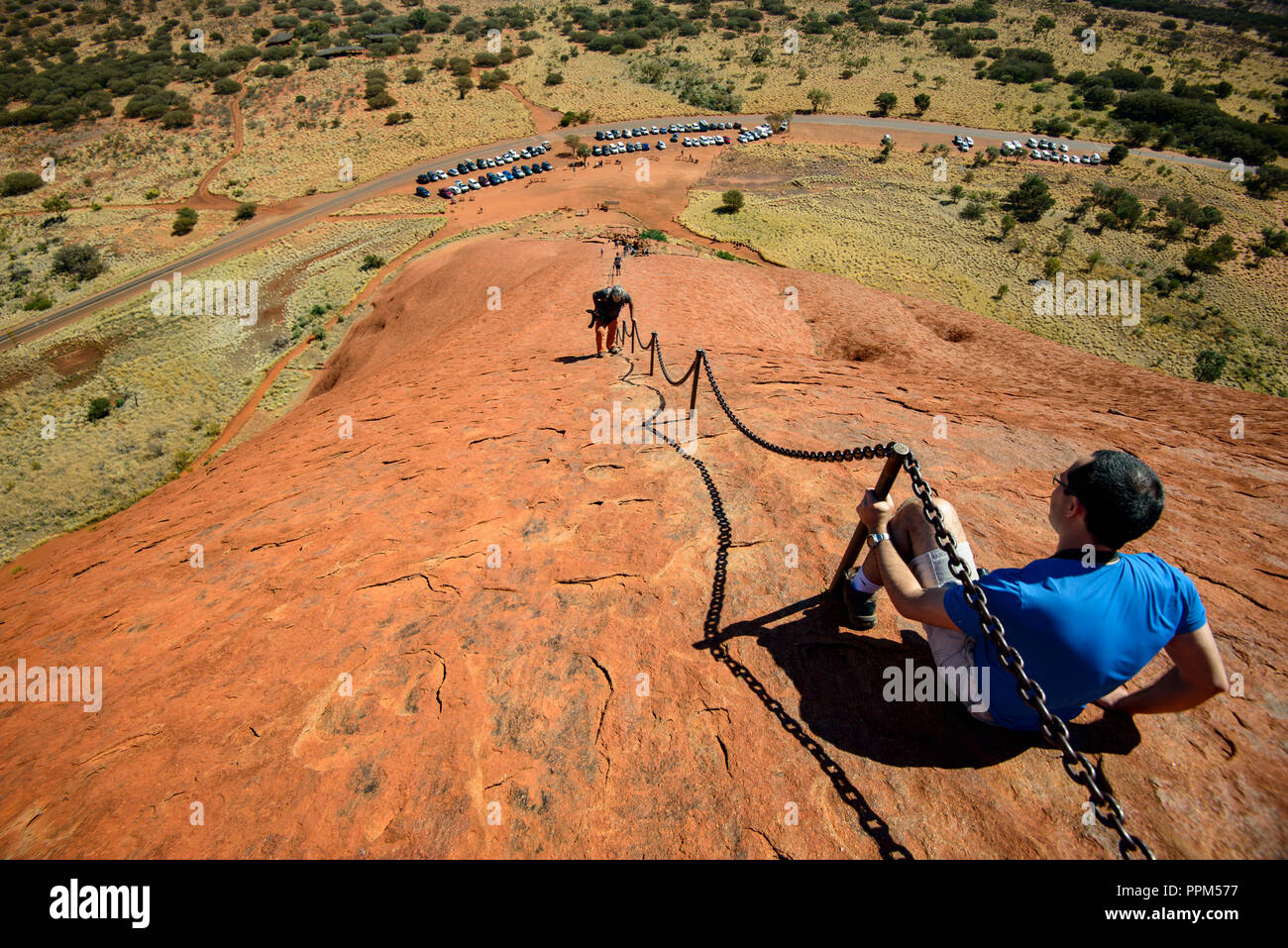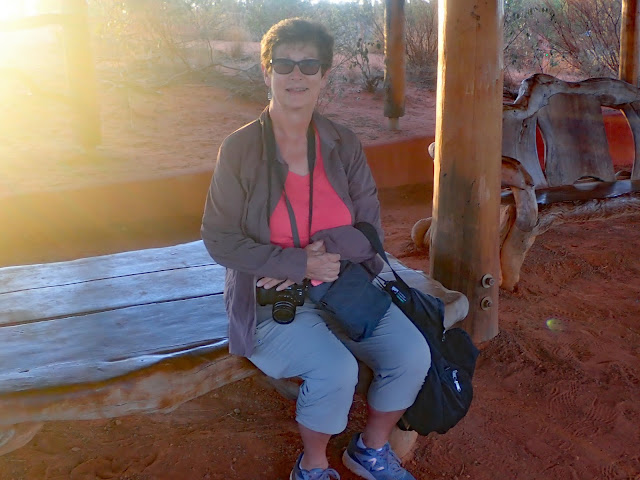Uluru is a red rock formation. Sometimes my camera was not set correctly.  |
| From this angle, it looks like you could walk around it in 20 minutes. It would take MUCH longer. There is nowhere else in the world like Uluru (Ayers Rock). Located within the Uluru-Kata Tjuta National Park, this Australian icon is an isolated bare sandstone rock, 348 metres high and 9.4 km (5.8 miles) around. Its beautiful range of colours change throughout the day. Sunrise or sunset is the best time to capture this once in a life time Australian outback moment, and several |
 |
| Internet pic to show the steepness of the climb. |
| Picture from internet to show terrain around the Uluru. |
 |
| People even took little kids up. Seemed stupid to me. |
 |
| Kata Tjuta (The Olgas) lies about 50km from Uluru (roughly a 45 minute drive) and is a second landform within Uluru-Kata Tjuta National Park. Although it’s nearby, the conglomerate rock at Kata Tjuta is quite different than the arkose sandstone found at Uluru. Kata Tjuta means ‘many heads’ and has many smaller formations instead of one large one. This area was named the Olgas after Queen Olga of Wurttemberg in 1872, but has since proudly returned to its original name. |
| Pic from internet of Kata Tjuta. |
 |
| Hiking at Kata Tjuta |
 |
| Look at the heart formation in the rock. |
 |
The rock art around Uluru is evidence of how cultural knowledge and Tjukurpa stories have been passed from generation to generation.
The park’s rock art sites have many layers of pictures, symbols and figures painted on top of each other. This is because the same sites have been used in Anangu education for tens of thousands of years.
The rock surfaces are like a classroom blackboard that a teacher has used to illustrate a lesson, and only those who attend the class can fully decipher the notes left behind.
Anangu rarely
How old is the rock art at Uluru?
It is extremely difficult to accurately date the rock art at Uluru. Carbon dating can only pick up the age of the rock and the materials used for the pigments, rather than the paintings themselves.
However, people are believed to have lived in the Uluru region for at least 30,000 years. The rock art is an important historical and scientific record of human occupation in this area.
How were the paints made?
Anangu traditionally made their paints from natural minerals and ash. The dry materials were placed on flat stones, crushed and mixed with kapi (water) or animal fat.
The most common paint colours are red, yellow, orange, white, grey and black. These colours come from a variety of materials. Tutu (red ochre) and untanu (yellow ochre) are iron-stained clays that were very valuable and traded across the land. Burnt kurkara (desert oak) provides both purku (black charcoal) and tjunpa/unu (white ash).
Rock art conservation
Anangu traditional owners work with park staff to document and conserve around 80 rock art sites.
The rock paintings are easily damaged because they are made from natural pigments. Water, dust, minerals from the rock, lichen,
Art sites are also damaged when people touch the artwork or graffiti the sites. In the early days of Uluru tourism, many tour guides even poured buckets of water on the art to bring out the colours and make them look better in black-and-white photos. This practice damaged the art and thankfully was stamped out long ago.
Viewing platforms have been built at the most popular art sites to reduce dust and damage. You can help us look after Uluru’s precious rock art by admiring and photographing the works, but never touching them.
|
 |
| We thought the fella driving this was looking for a wife. |
 |
| Bus parking lot for viewing sunrise and sunset at Uluru. Many busses poured in. Each bus had a table set up with food and drink. A good time was had by all. |








































































No comments:
Post a Comment